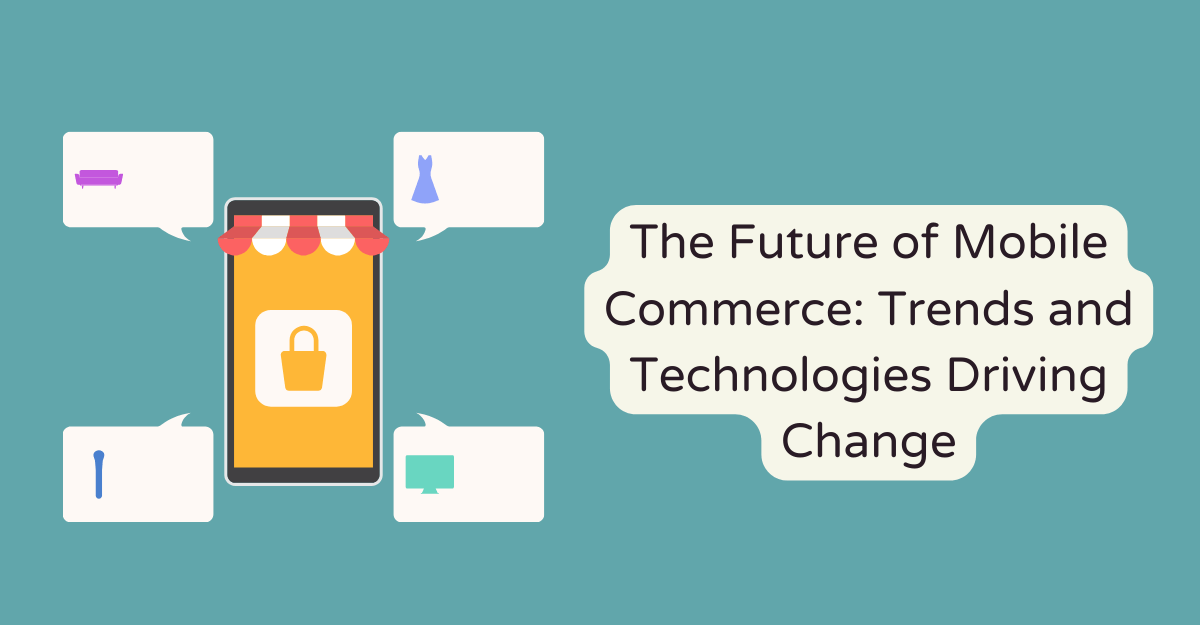
The Future of Mobile Commerce: Trends and Technologies Driving Change
In the rapidly evolving digital landscape, the future of mobile commerce (m-commerce) is a topic of keen interest and significant importance for businesses and consumers alike. As we delve into the trends and technologies shaping this dynamic field, it’s essential to recognize innovation’s pivotal role in driving change. In this context, understanding how to improve cx strategy and design becomes crucial for companies looking to thrive in the competitive m-commerce arena.
The beginning of the mobile commerce time has redefined how we shop, sell, and interact with brands. Nowadays, more than in the past, customers are turning to their mobile devices not simply for communication but as a primary tool for their purchasing decisions. This shift towards mobile commerce is propelled by technological advancements, changing consumer behaviors, and the ever-growing need for convenience and customization.
As we look ahead, it’s clear that mobile commerce will continue growing and become increasingly sophisticated, with new trends and technologies emerging to meet the demands of both businesses and customers. Consumers expect the ability to research products quickly, compare prices, and read reviews from their smartphones’ convenience. Mobile devices allow shoppers to purchase anywhere and anytime without being tied to their computers.
The growing use of mobile apps and responsive websites also meets shoppers’ increasing desire to navigate online stores through small screens. Meanwhile, the availability of location-based services and geotargeted ads present new opportunities for companies to reach consumers on the go with personalized offers. In the future, technologies like virtual and augmented reality may further shape how we browse items and purchase through our mobile devices. Advances that simplify the shopping experience for busy customers will help propel the continued rise of mobile commerce.
The Rise of Personalized Shopping Experiences
Understanding customers individually is a pivotal trend in the evolving landscape of mobile commerce. Technological innovations in artificial intelligence and machine learning empower businesses to gain unprecedented insights into their clientele. By studying purchase histories, website browsing patterns, and social media activities, companies can perfectly customize their products and services to align with each shopper’s distinct requirements and tastes.
This tailored treatment deepens the shopping experience for consumers, fostering engagement and allegiance that propels revenue and nurtures long-lasting bonds. As businesses continue leveraging cutting-edge data analytics to discern personalized preferences, the future of retail is being reshaped around customized connections that cater to every customer as a unique individual.
Seamless Omnichannel Integration
As mobile commerce continues to evolve rapidly, the lines between online and in-store shopping are blending increasingly. Shoppers expect a consistent experience, whether browsing items on a smartphone app, finalizing a purchase through a website, or collecting a product at a brick-and-mortar location. This integration necessitates businesses seamlessly connecting their mobile commerce platforms with physical stores and digital presences, crafting a harmonious and interwoven retail ecosystem.
For example, augmented reality (AR) and virtual reality (VR) also contribute to this synchronization, delivering immersive and engaging shopping experiences that shorten the distance between the electronic and tangible realms. Consumers have more options than ever to find exactly what they need quickly and efficiently, regardless of location. Companies embracing this convergence will satisfy customers while gaining a competitive advantage. However, some challenges around data privacy and customer service across channels still need to be addressed. Further innovations undoubtedly lie ahead as mobile and brick-and-mortar evolve side by side into a borderless shopping experience.
Mobile Payments and Financial Technologies
The future of mobile commerce is closely intertwined with advancements in mobile payment methods and financial technologies. With the growing popularity of digital wallets that can be loaded with funds from bank accounts or credit cards, contactless payments made with a mobile device tap, and cryptocurrencies, consumers are continuously searching for quicker, safer, and more convenient ways to complete transactions on the go.
Businesses implementing these evolving technologies can effortlessly streamline the checkout process, making purchases simpler and faster for customers. Catering to people’s diverse payment preferences allows companies to appeal to a broader customer base. Furthermore, improvements in blockchain technology are set to revolutionize mobile commerce by enhancing security, reducing fraud, and enabling transparent and efficient transactions in real time.
Blockchain protects sensitive financial information so users can shop with peace of mind. It also minimizes deceitful activities so merchants avoid unnecessary losses. Transparent record-keeping on blockchain networks provides visibility to all parties involved in a transaction. This helps resolve disputes efficiently if any issues arise.
Conclusion
The future of mobile commerce certainly looks bright. Trends and technologies continue advancing at a speedy rate, shaping the landscape of mobile shopping in novel ways. Consumers now expect personalized experiences across all channels whenever and wherever they shop. Businesses integrate different avenues seamlessly to engage customers throughout their journey. Innovative payment solutions also emerge to accommodate shifting preferences. For companies aiming to thrive in these dynamic times, merely keeping up is insufficient.





